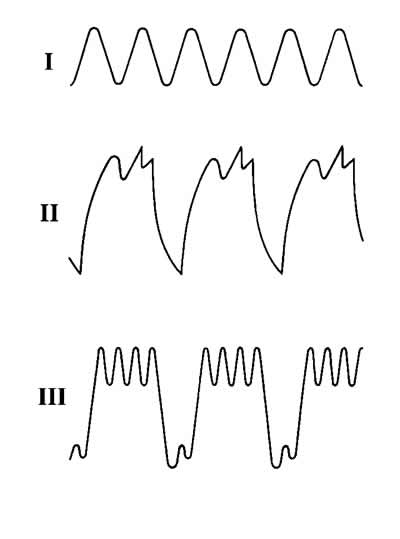To check, assemble the circuit according to Fig. 7-7. Disconnect the common terminal wire of the three additional diodes from the plug «D+» voltage regulator and take measures so that the tip of the disconnected wire does not short-circuit with the generator ground. To plug «D+» regulator, connect the wire from the battery through switch 1. Thus, the excitation winding will be powered only from the battery.

Pic. 7-7. Connection diagram for checking the generator with an oscilloscope:
1 - switch;
2 - generator;
3 - voltmeter;
4 - rheostat;
5 - ammeter;
6 - switch;
7 - battery.
Turn on the stand electric motor and bring the rotor speed up to 1500-2000 min-1. Use switch 6 to disconnect the battery from the terminal «B+» generator and rheostat 4, set the output current to 10 A.
Use an oscilloscope to check the voltage at the terminal «B+» generator. With serviceable diodes and the stator winding, the rectified voltage curve has a sawtooth shape with uniform teeth (pic. 7-8, I). If there is an open in the stator winding or an open or short circuit in the diodes of the rectifier unit, the shape of the curve changes dramatically: the uniformity of the teeth is disturbed and deep cavities appear (pic. 7-8, II and III).

Pic. 7-8. Generator rectified voltage waveform:
I - the generator is working;
II - the diode is broken;
III - break in the diode circuit (stator winding).
By checking the shape of the voltage curve at the terminal «B+» generator and making sure that it has a normal appearance, check the voltage on the plug «D» generator with the wire disconnected from the plug «D+» voltage regulator. Plug «D» is the common terminal of three additional diodes (see fig. 7-5), supplying the excitation winding during the operation of the generator. The shape of the voltage curve here should also have a regular sawtooth shape. An irregular shape of the curve indicates damage to the additional diodes.
